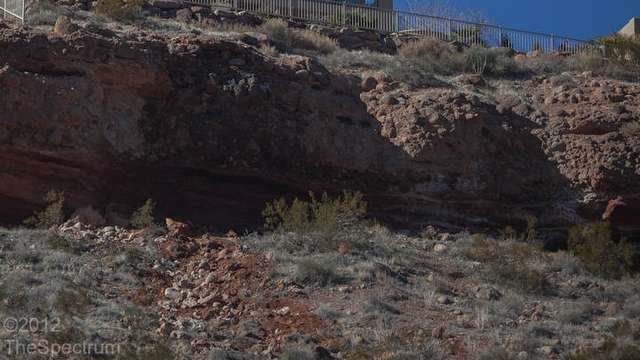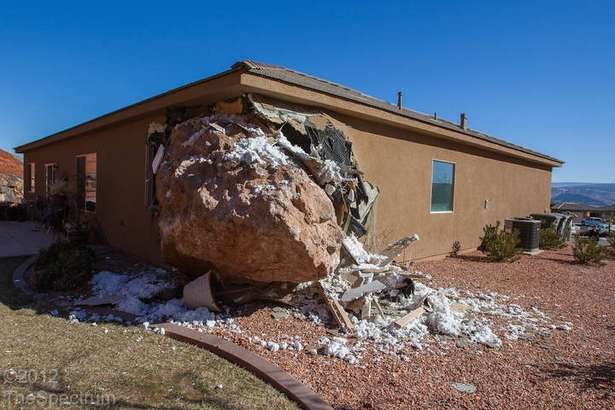29 January 2013
A round up of just a few of the recent landslide events
Posted by Dave Petley
In the last few weeks there has been an unusual amount of landslide activity worldwide. This is just a few of the more interesting events, there are many more that I’ll try to cover in the next few days. Thanks to everyone who has pointed them out to e, and apologies if I have not acknowledged your contribution or covered your story yet. Please do keep them coming!
1. The raw footage of the Mount Dixon Rock Avalanche
The original video of this landslide in New Zealand is now available here (hat tip to Eric Miller for finding this). It is genuinely amazing. In fact the motion is even more complex than I had appreciated at first in two ways. First, in the early part of the video the landslide appears to have a more rapid movement component on the left side (as seen from the camera). I would not have guessed this from the morphology of the deposit. Second, the landslide continued to creep for a considerable period after the main motion ceased, and it was this creep that caused the bull dozing of the snow at the landslide snout. Very interesting indeed, and a perfect illustration of just how complex landslide motion can be.
2. Successful mitigation of the Braldu Valley landslide but continued hardship at Attabad
I can only admire the people of the Skardu area of Northern Pakistan for their pragmatic response to the hazards posed by the valley blocking landslide in the Braldu valley. The tribune newspaper in Pakistan reports that “An artificial lake formed accidentally in Shigar valley of Gilgit-Baltistan (G-B), this week, is draining gradually after officials and local volunteers dug a spillway through the debris on Saturday…As the news of the river’s blockade spread, civilian and army authorities rushed to the valley to get first-hand information. We hope the situation will normalise soon, said Basharat Ali, a government official in Skardu. By the time a spillway was carved out, the lake had expanded up to four km upstream and had gained 100 feet in height.” Meanwhile, three years on Attabad continues to cause enormous hardship. Weather conditions in the valley are now poor, such that the lake has frozen over, preventing the boat service from operating. This in turn is causing very real problems for the communities upstream. Thanks to James for finding the key news story about this situation over the weekend,
3. Rockfalls!
A spate of rockfall events has also been in the news around the world. In Christchurch, a boulder detached from a cliff in Sumner last week and struck a house. The property had been red-zoned but appears to have been occupied at the time:

http://www.stuff.co.nz/the-press/news/christchurch-earthquake-2011/8216018/Van-sized-boulder-overhangs-home
.
It is the severity of this threat that has driven the (very necessary) rockfall hazard and risk assessment work in this area. This event catalyzed the discussion once again, leading to the Canterbury Earthquake Recovery minister Gerry Brownlee declaring I told you so, but local residents responding with claims that protection work would manage the hazard. It is however really challenging to defend large numbers of houses against 40 tonne boulders.
Meanwhile, the potential impact of these events was illustrated in St George in Utah, where a woman had a very lucky escape when a very large boulder crashed into the corner of her house in the middle of the night. She was pinned under the boulder, breaking her jaw and sternum, and inflicting additional injuries. There is an excellent gallery of images of the event here, from which these two photos, showing the source and the house are taken:

http://www.thespectrum.com/article/20130119/NEWS01/301190004/Boulder-crashes-into-St-George-home?nclick_check=1

http://www.thespectrum.com/article/20130119/NEWS01/301190004/Boulder-crashes-into-St-George-home?nclick_check=1
.
4. A retaining wall failure video from Spain
Over in Spain heavy rainfall inthe last few days has also induced numerous landslides and severe flooding in the Basque country. Thanks to Gaizka Garmendia Dios for pointing out the footage here, which captures the moment that a retaining wall collapsed. A subsequent section of the video shows a later shot that demonstrates that another large section of the wall collapsed later in the day. If you look carefully you can see the extensive deformation in the wall at the top of the slope as well.


 Dave Petley is the Vice-Chancellor of the University of Hull in the United Kingdom. His blog provides commentary and analysis of landslide events occurring worldwide, including the landslides themselves, latest research, and conferences and meetings.
Dave Petley is the Vice-Chancellor of the University of Hull in the United Kingdom. His blog provides commentary and analysis of landslide events occurring worldwide, including the landslides themselves, latest research, and conferences and meetings.